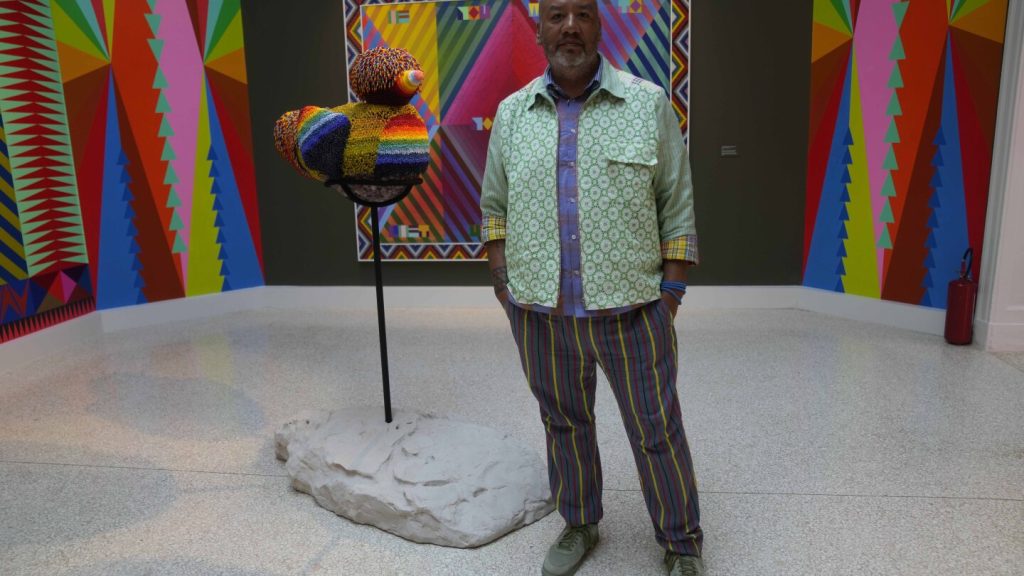Jeffrey Gibson’s colorful and vibrant exhibition at the U.S. pavilion at the Venice Biennale celebrates his Native American heritage and focuses on inclusion and equity. As the first Native American artist to represent the United States solo at the Biennale, Gibson’s work is a reflection of his identity and a call to action. His exhibition titled “the space in which to place me” features beadwork sculptures and paintings that highlight the broken promises of equity in U.S. history while projecting optimism through the vibrant use of color.
The exhibition, curated by Abigail Winograd, aims to provoke thought and emotion in viewers as they move through the pavilion. Beaded sculptures and paintings reference U.S. legislation and historical figures, underscoring the ongoing fight for equity and justice. Gibson’s use of craft and beadwork pays homage to Native American traditions while creating something entirely new and innovative. The intricate details and diverse sourcing of beads add depth and meaning to his art, inviting viewers to consider the complex history of Indigenous peoples in the United States.
Gibson’s personal history as a global citizen has influenced his artistic practice, incorporating elements from op art, pattern and decoration, psychedelia, rave culture, and more. While his work is rooted in his Indigenous background, he also embraces a wide range of influences and experiences. Through his art, Gibson aims to share his intersected, layered experience with the world and invite others to reflect on their own identities and histories. The exhibition aligns with the theme of inclusion at the Biennale, which features around 90 national pavilions and runs from April 20 to November 24.
The celebration of color, pattern, and craft in Gibson’s exhibition is a testament to his artistic vision and commitment to exploring themes of identity, history, and justice. By reinterpreting historical texts and figures through beadwork and painting, Gibson encourages viewers to engage with the complexities of U.S. history and consider the ongoing struggle for equity and inclusion. Through his use of beadwork and craft techniques, Gibson honors the legacy of Native American makers while pushing the boundaries of traditional art forms.
As the first Native American artist to represent the U.S. at the Venice Biennale in nearly 90 years, Gibson’s work marks a significant moment in contemporary art history. His exhibition challenges traditional narratives and offers a new perspective on the intersection of Indigenous art, history, and activism. By inviting viewers to reflect on their own experiences and identities, Gibson’s art serves as a powerful reminder of the importance of inclusion, equity, and representation in the art world.


